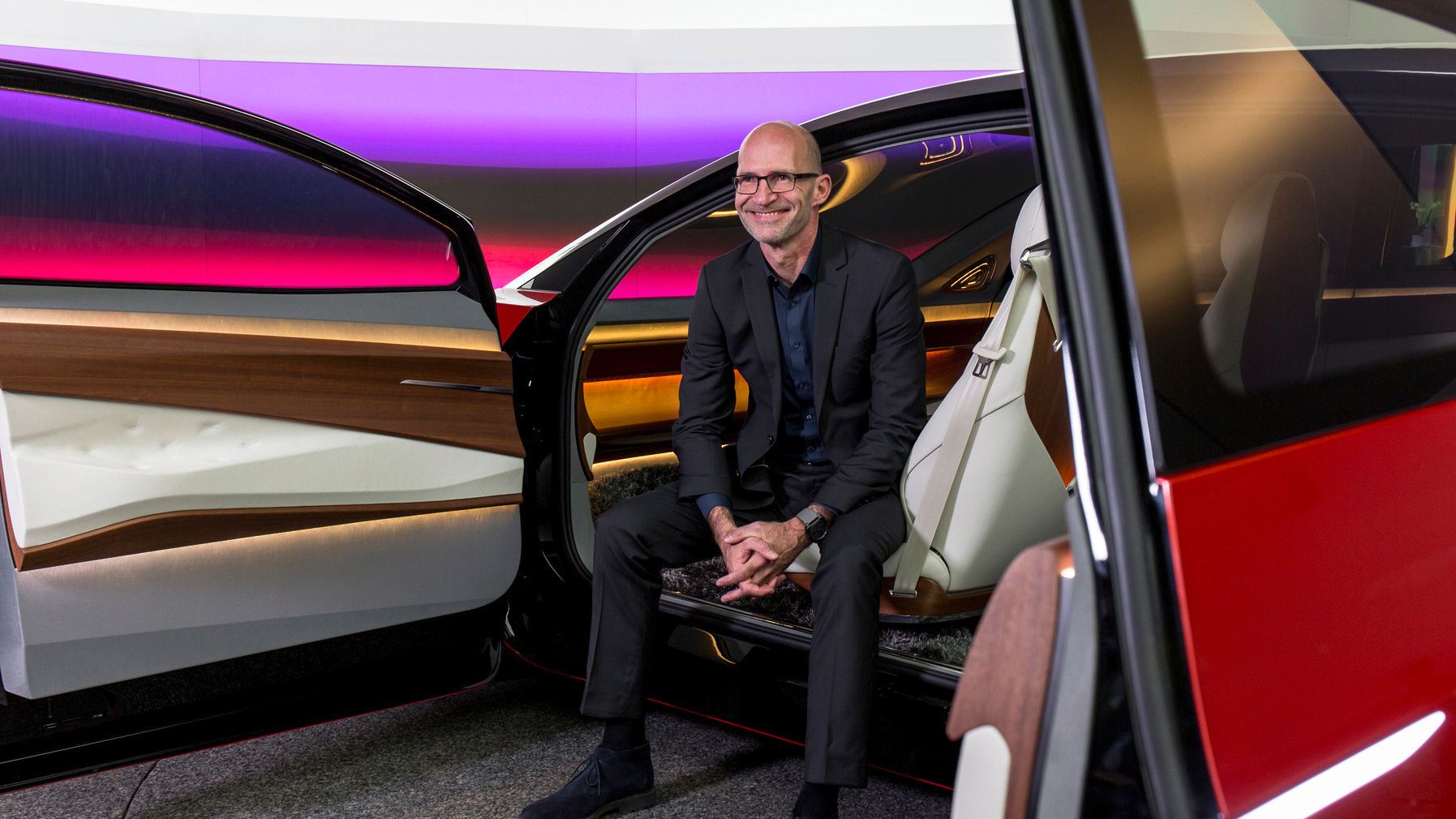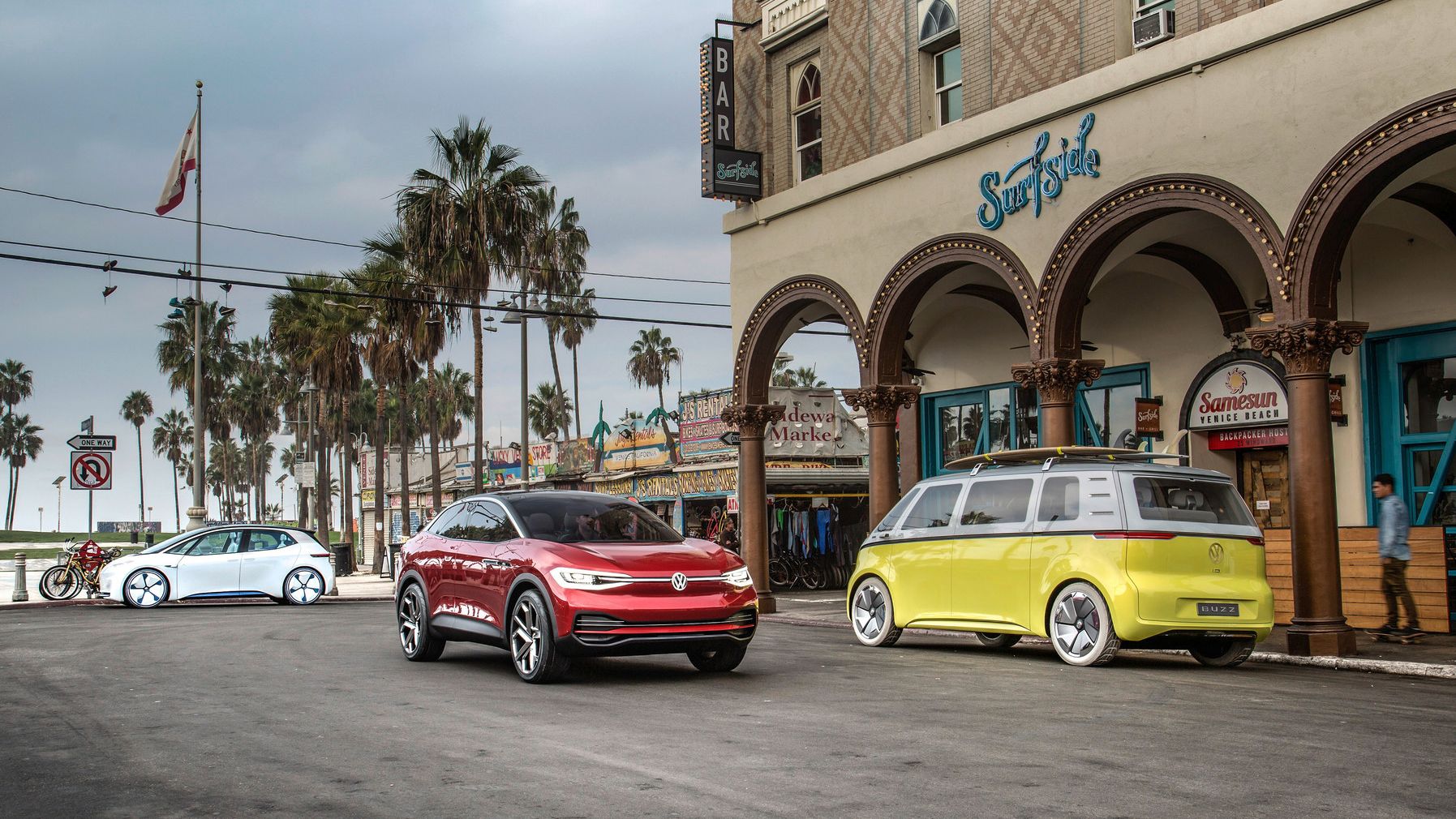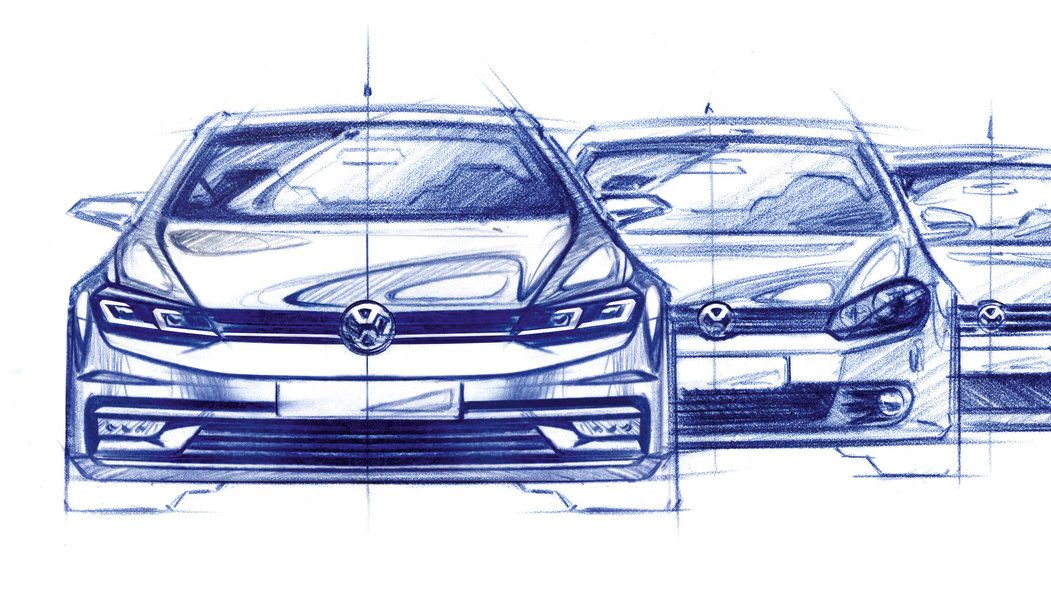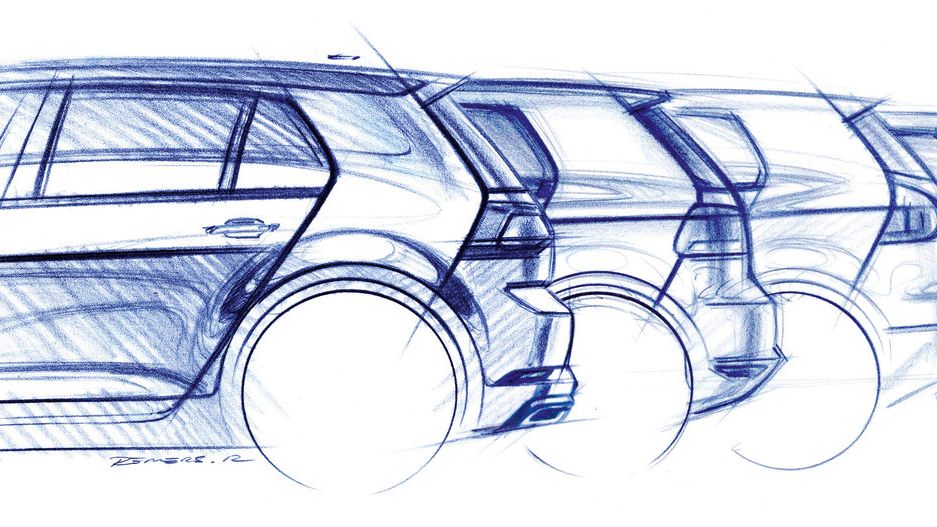Design has to be experienced with all senses
The Head of Volkswagen Design, Klaus Bischoff, on the new tasks for designers, the challenges posed by the transformation of mobility and why the C-pillar of the Golf is one of the most important assets of the company.

What car designers create today will appear on the market only years later, so they have to be extremely forward-thinking. Mr Bischoff, what is life like in the future? It is really not as difficult as one might imagine. As soon as I enter the doors of the Design Centre, I enter the future, in a manner of speaking. Our normal work environment is approximately four years ahead of what is now available to customers. A large part of the job of a designer involves understanding the constant change present in society and what the world could look like tomorrow. We try to develop suitable products on the basis of these ideas. We start with a utopia which is then slowly transformed into reality through the first sketches and a great deal of work.
What does the brainstorming process look like in tangible terms? Of course, it involves a lot of team work. We grapple with future scenarios through dialogues and sometimes also intense discussions. This is like a ping-pong game of creativity. If this or that happened, what would the effects be? A vivid imagination is needed to place yourself into this scenario. A good example is the world of autonomous driving, as we have interpreted it in the current I. D. Vizzion. The driver doesn't have to do anything at all, so there is no steering wheel, no pedals, no display. Controls appear only when they are needed. This is, of course, a radical approach. But one needs distant destinations in order to find one's way more easily over short distances.
What role does the boss play in all of this? It is my responsibility to play referee for the ping-pong game, but also to make the big decisions on our direction.
Car design has been a decisive force in our everyday life for decades. Has this role been lost? No way. Of course, the digital world has gained enormous significance. But we are currently making up for lost time. We find ourselves at the dawn of a new age of mobility in which the digital nature of the car plays a significant role. One could certainly compare this to the invention of the smartphone.
Electric mobility and digital networking are more technology topics. What does that have to do with design? Design acts as an interpreter, even more so than Technology. Whatever I look at, it is always design. I look at a screen, but there is incredibly complex technology at work behind it, and this technology is so abstract that most people cannot understand it. We are called upon to translate the new technical world into simplicity, clarity and beauty.
So, Design's area of responsibility has also changed significantly? The change has been much more pronounced, more so than in all the previous decades. Today, we have to think on many more levels. Of course, the exterior is important, but now, in addition to this, one of our main tasks is to enable the design to also be experienced. With all senses. What does it sound like? How does the car feel? What does it say to me? Our new job is simplification. The technology, the control options, have become so much more complex, but the design must be simpler and easier to understand. That is the high art of design and this aspect plays a special role, especially for the Volkswagen brand. The new purism involves not only thinking about which lines is superfluous. We also have to constantly ask ourselves which actions can be left out, which elements are not necessary.
So car design has less and less to do with designing the body ... The shape of an edge, the curvature of a surface, the overall aesthetics of the exterior and interior remain important but many other aspects have been added to this. A new term which we all have to get used to is "extraterior"...
What exactly do you mean? By this we mean the manner in which vehicles will communicate with people in the future. Autonomous cars have to interact with pedestrians and other road users. So the task is to create a friendly and unambiguous dialogue between the machine and its surroundings. For example, when a car yields to a pedestrian, it uses LED light to project a zebra crossing onto the road. A common language has to be developed and agreed upon for this, but every manufacturer will design the elements differently. And the mere fact that one has mastered the technology will be of prominent importance.
The acceptance of the car in the urban sphere is declining. Can societal changes of this kind be incorporated into design? One of the main tasks of Design is to find solid answers to question such as these. A strong need for individual mobility still remains. So, we have to find solutions to increase acceptance again. Volkswagen finding its way back to simplicity and serenity in its appearance has a lot to do with this. With our creed "form follows freedom", we have set ourselves the goal of using the freedom that results from electric mobility, connectivity and autonomous driving, to develop new and innovative vehicle concepts. In the past, designers were like tailors whose task it was to craft beautiful clothes for the available technology. Our field of work will be much more oriented on design. We will also conceive new mobility solutions and be much more involved in their implementation than we were before.
What role does the I.D. Family play in this transformation? The I. D. Family is nothing less than the expression of the dawning of the new age at the Volkswagen brand. This does not, however, mean that we will abandon our values. The value structure will remain intact. With the Beetle, Volkswagen provided mobility for a broad spectrum of the population. The Golf added the values of functionality and safety, which then led to the transcendence of the design. The aim is that the I. D. Family will become the third phase of invention of the Volkswagen brand. There will be another paradigm shift in the field of technology, but the challenge for the brands is to make this technology affordable and accessible for everyone. Our goal is that electric mobility is as widely accepted as possible - and this is possible only with a complete product family.

Does electric mobility need a completely different design? People also want a new look for this new form of mobility, which is why it would send the wrong signal if we simply packaged electric mobility in the old familiar shapes. We want to convey the sustainability, quality and technical sophistication as well as the extraordinary nature of the product. The more compact technology enables more freedom in the design process which we, of course, make use of.
Concept cars are always a thrill to behold, but the finished product in the showroom often looks quite different ... You would be amazed at how similar the first I. D. Family production model will be to its concept car equivalent. We will be speaking to the customers in a completely new language. And not only with regard to the appearance: after the initial "Wow!" for the design, the "Aha!" will follow for the simplification of the controls, although many more options are available.
Why isn't the design for electric cars even more radical? The compact technology would certainly allow for much more futuristic designs ... This has a lot to do with current legislation. As long as not all cars are driving autonomously, the risk of an accident has to be taken into account. So, for example, airbags and crumple zones must still be allowed for.
Will the design of the I. D. Family also have an influence on the future Golf generations? The I. D. Family has its own quite distinct identity, which will define the face of the new I. D. brand. But, of course, we have to express the overall transformation at Volkswagen in our designs. Our advantage is that we can build on a family of downright iconic models. The Polo, Golf, Passat, Tiguan and, last but not least, the T-Roc, all have strong product personalities which people associate closely with the Volkswagen brand. The design ideas behind the I.D. Family are going to strongly influence the "icon family", but the two families can never look the same.
Electric mobility, simplification, conceptual thinking - which other changes are emerging for the work of a designer? The interior is becoming more and more important. A car provides a capsule of privacy and privacy is a valuable commodity today. The interior space is becoming more and more like a living space. The expectations regarding shaping and materials will increase. I also see a big opportunity here for the personal car vis-à-vis car-sharing concepts. People would prefer to spend time in their own living room than in public spaces.
How do designers deal with the fact that beauty is extremely subjective and their own jobs can therefore never be an exact science? Imagine what it would be like if everyone had the same taste. Everything would have a similar aesthetic. That would be terrible! It is these different tastes and our cultural diversity that make human beings what they are. One can also trace this throughout the history of the automobile: after its initial modest beginnings, diversity of form exploded in the twenties and thirties until the war levelled everything. However, it did experience another renaissance later. I am convinced that the mobility transformation currently taking place will usher in a new age in the essence of design.
How do you personally define beauty? (Laughing) That is a very good question! (Pause) In sound. Every person, every sketch, every product - whether it's car, mouse, furniture or boat - has to have a sound for me. Either the effect is perfect straight away or it is dissonant. If it sounds good and is round, then it is beautiful. Simplicity and perfection in proportions has a sound for me and this sound remains. Unnatural, unnecessary elements are dissonance for me, which has to be filtered away in order to get to the core of beauty.


Is this how an enduring design comes into being? Yes, I think so. But it also has a lot more to do with a particular mentality. With respect for the spiritual assets of a brand. Creating an iconic design language is hard work. And once you have managed this, you have to handle this treasure very carefully. There is a very thin line between having the courage to renew and preserving elements which have been successful. With a new Golf, the same questions are always posed: what can stay? What has to go? A Golf would not work without its iconic C-pillar. This rule is to be applied: be cautious but nevertheless courageous. Be responsible, but with style. But definitely avoid caricatures. In the end, a Golf has to be a Golf and nothing else.
And when a new model is to be established, such as the current T-Cross ... We have to make a lot of effort to equip the new models with enough radiance to enable them to stand out next to the other strong brand product personalities.
How can one bring brand values to expression in design, for example, a value such as quality? Quality always has something to do with precision. The surfaces always have to be extremely beautiful and the proportions have to be in harmony. It starts with the architectural work of a designer and ends with the usability of a touchscreen display. How does it feel? How precise is the control?
The I. D. Family conveys powerful notions such as sustainability, cleanliness and efficiency. Which stylistic means were used here? Primarily simplicity right up to purism. Ultimately, we are returning to the beginnings of the Volkswagen brand. The round headlights of the Beetle gave the Beetle eyes and were likeable. There was no radiator grille because the engine was at the back. Once again, we do not need a radiator, so it was perfectly clear to me that we would be returning to the origins of the Beetle's likeable charm. The shapes in nature also have given us valuable direction - for example, the calm and serene line of a sand dune.
How heavy is the weight of the pressure for a creative person to be partially responsible for the economic success of the company? It is not just the product features, but also attractiveness which intuitively influences a purchase decision. I don't block this out but it does not weigh on me. If I considered the economic significance of my every line, my pen would continually tremble. Perhaps it is easier for me because I grew up with this. I have spent my entire professional life at VW, from an apprentice up to almost ten years as the Head of Design. The responsibility has become a part of me, just as one develops a sense of security in one's own design handwriting over time, which is important for the continuity of the brand.